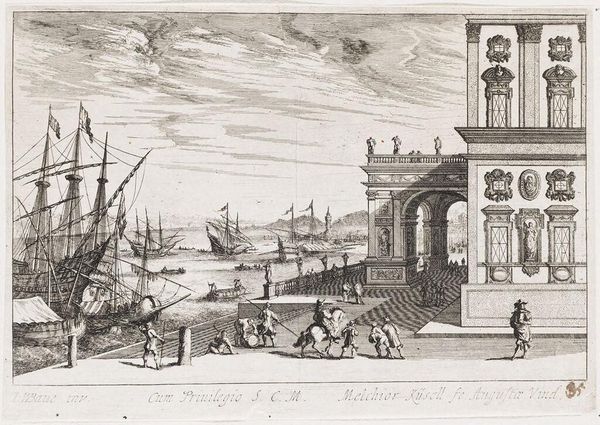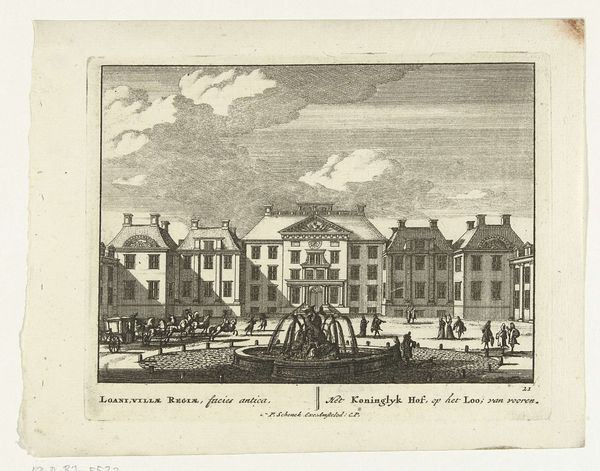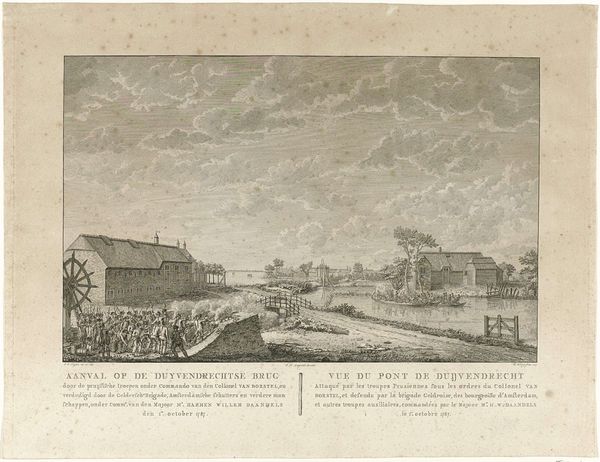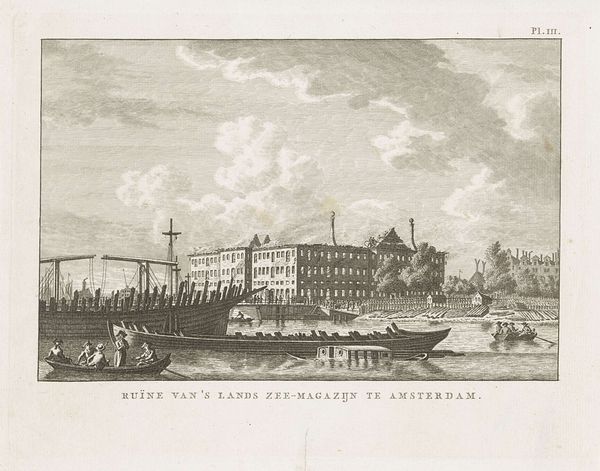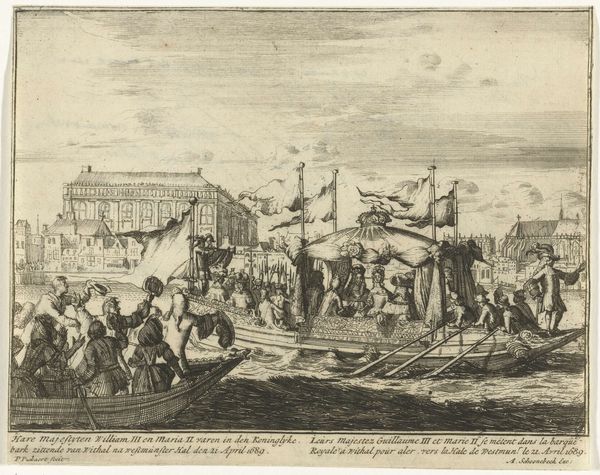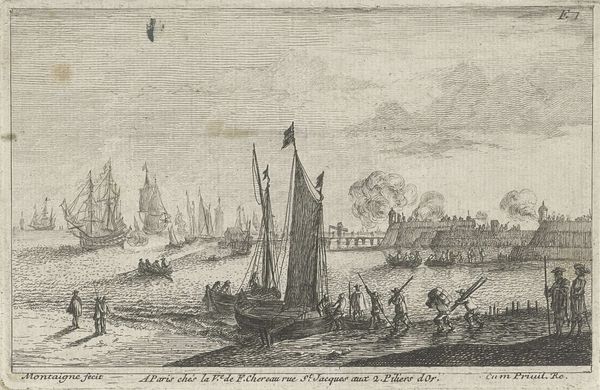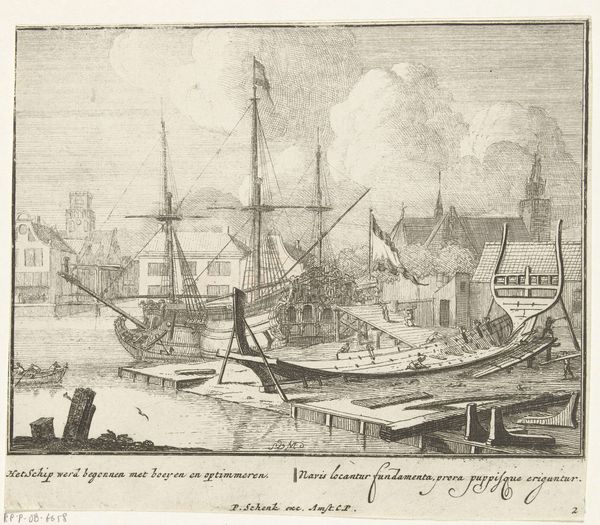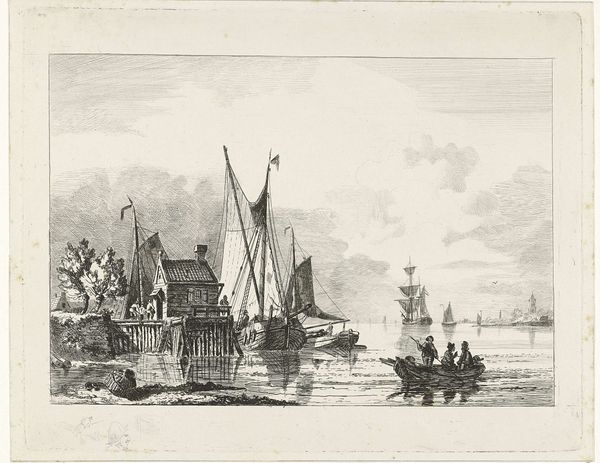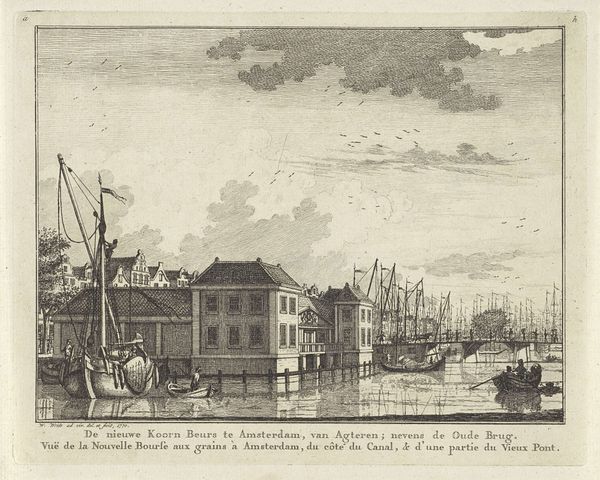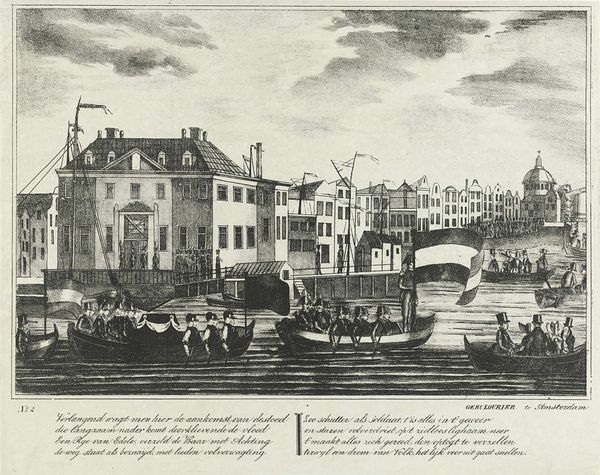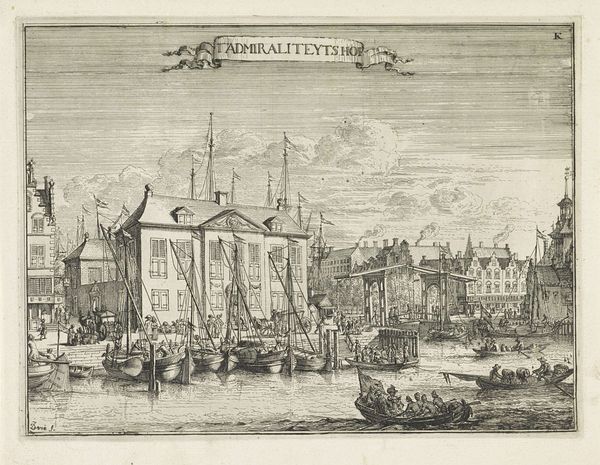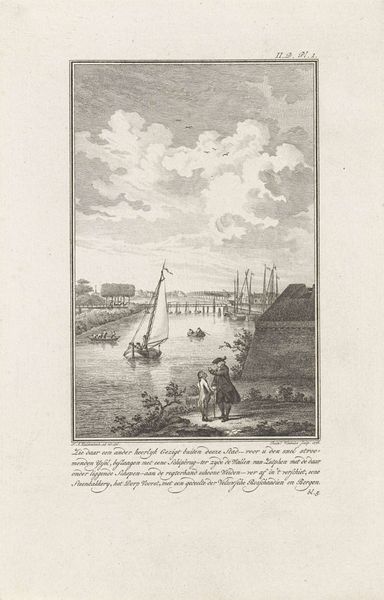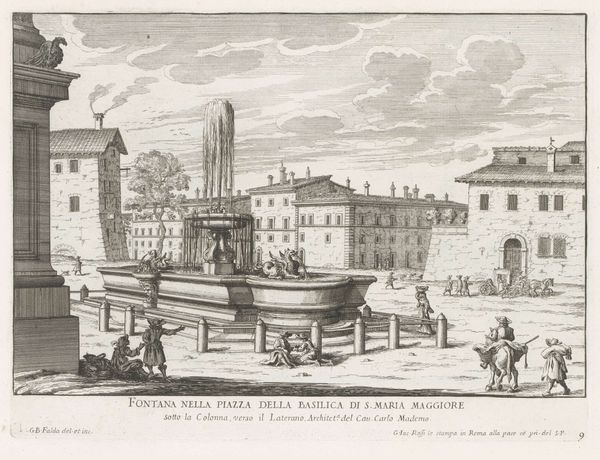
print, engraving
#
dutch-golden-age
# print
#
landscape
#
cityscape
#
engraving
Dimensions: height 155 mm, width 257 mm
Copyright: Rijks Museum: Open Domain
Editor: This print, "Haven van Amsterdam met het wachthuis" by Johann Jakob Kleinschmidt, likely made sometime between 1697 and 1772, is so detailed. The hustle and bustle of the Amsterdam harbor feel surprisingly…stark? Given the activity depicted. How do you interpret this work, especially considering its historical context? Curator: That’s a great initial reaction! We need to think about this image as more than just a picturesque scene. It presents the port as a site of economic power during the Dutch Golden Age. Look at the figures – who do you think controlled the wealth here and how might this image play into reinforcing that control? Editor: I suppose the wealthy merchants likely controlled the port. This image probably romanticized that control? Curator: Exactly. Images like this were instrumental in solidifying Amsterdam’s global trade dominance. Think about what isn't shown – whose labor built this harbor, and whose voices are missing from this narrative? Who was excluded and exploited? Editor: So it's less about a literal depiction and more about an assertion of dominance. What’s your takeaway from the title of the work? Curator: The title suggests safety and watchfulness, yet perhaps points to regulation imposed over free commerce at the harbor, a tension inherent in the development of early global trade. Considering those ships in the background, filled with cargo brought in through exploitative trade, the image becomes more troubling than celebratory. It is very ambiguous! Editor: I never thought about harbor scenes holding so much power. It reframes my entire view. Curator: Indeed. Images aren't neutral. They reflect and shape the world around them, often masking deeper social and economic inequalities. Editor: Thinking about it in that sense, I learned something about visual rhetoric here.
Comments
No comments
Be the first to comment and join the conversation on the ultimate creative platform.
